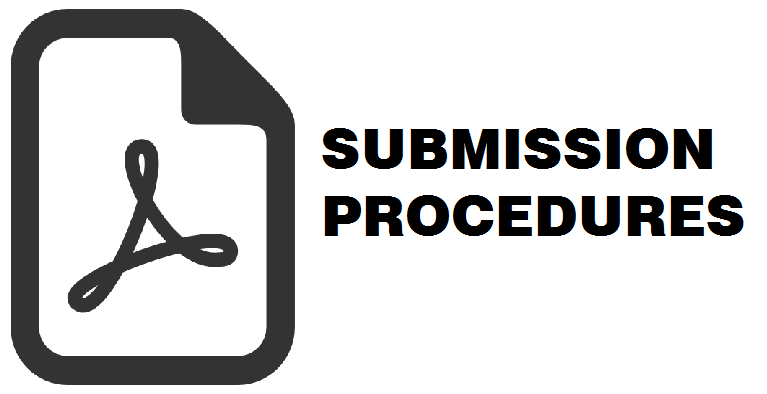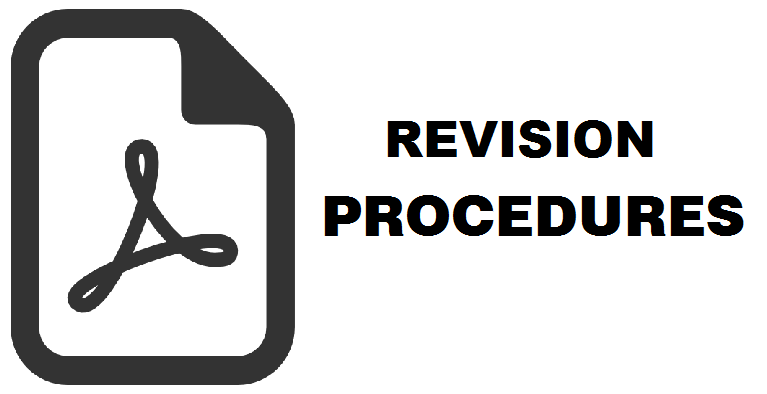Deforestation Characteristics between 2006 and 2020 over Tropical Forest in Central Kalimantan, Indonesia
Hendrik Segah(1*), Afentina Afentina(2), Fatkhurohman Fatkhurohman(3), Yusuf Aguswan(4)
(1) Forestry Department, Faculty of Agriculture, University of Palangka Raya, Indonesia and Center for Development of Science, Technology and Peatland Innovation (PPIIG), University of Palangka Raya, Indonesia
(2) Forestry Department, Faculty of Agriculture, University of Palangka Raya, Indonesia and Research and Community Services (LPPM), University of Palangka Raya, Indonesia
(3) Environment & GIS Expert. Palangka Raya, Central Kalimantan, Indonesia
(4) Forestry Department, Faculty of Agriculture, University of Palangka Raya, Indonesia and Center for Development of Science, Technology and Peatland Innovation (PPIIG), University of Palangka Raya, Indonesia
(*) Corresponding Author
Abstract
Deforestation is reported to possess a vast and detrimental impact on the environment, economy, and social aspects of the community. In this context, the phenomenon should be assessed and analyzed to inform the decision-maker overseeing issued policy and development strategies. Therefore, this research aimed to characterize deforestation in Central Kalimantan between 2006 – 2020 using land cover map issued by the Indonesian Ministry of Environment and Forestry. Changes in natural forest cover were calculated and analyzed using the Remote Sensing and Geographical Information System (GIS) to determine trend, location, and land cover replacement of deforestation, reforestation, and degradation in Central Kalimantan Province, Indonesia. A series of Landsat images from 2000 to 2020 was used with a spatial resolution (30 m) and frequent revisit cycles. Additionally, the levels of forest loss, restoration, and degradation were accurately mapped by analyzing spectral bands and vegetation indices, providing valuable information for conservation efforts and other land-based policies. The results showed that Central Kalimantan lost 1.5 million ha of natural forest with a rate of deforestation of 117,000 ha/year from 2006 to 2020. Deforestation showed a decreasing trend and fluctuation in secondary swamps and dry forests located in the southern part of the island. This research could be used as a base to determine the target location for rehabilitation strategy to prevent further deforestation.
Received: 2023-10-23 Revised: 2024-01-11 Accepted: 2025-01-24 Published: 2025-02-12
Keywords
Full Text:
PDFReferences
A., C. (2001). Decentralization of policies affecting forests and estate crops in Kutawaringin Timur district, Central Kalimantan. In Decentralisation of policies affecting forests and estate crops in Kutawaringin Timur district, Central Kalimantan. https://doi.org/10.17528/cifor/001057
Ardiyanto, S. Y., Saraswati, R., & Soponyono, E. (2022). Law Enforcement and Community Participation in Combating Illegal Logging and Deforestation in Indonesia. Environment and Ecology Research, 10(4), 450–460. https://doi.org/10.13189/eer.2022.100403
Austin, K. G., Mosnier, A., Pirker, J., McCallum, I., Fritz, S., & Kasibhatla, P. S. (2017). Shifting patterns of oil palm driven deforestation in Indonesia and implications for zero-deforestation commitments. Land Use Policy, 69(September), 41–48. https://doi.org/10.1016/j.landusepol.2017.08.036
Austin, Kemen G., Schwantes, A., Gu, Y., & Kasibhatla, P. S. (2019). What causes deforestation in Indonesia? Environmental Research Letters, 14(2). https://doi.org/10.1088/1748-9326/aaf6db
Basuki, I., Adinugroho, W. C., Utomo, N. A., Syaugi, A., Tryanto, D. H., Krisnawati, H., Cook‐patton, S. C., & Novita, N. (2022). Reforestation Opportunities in Indonesia: Mitigating Climate Change and Achieving Sustainable Development Goals. Forests, 13(3). https://doi.org/10.3390/f13030447
Bissonnette, J.-F., & De Koninck, R. (2015). Large plantations versus smallholdings in Southeast Asia: historical and contemporary trends. Conference on Land Grabbing, Conflict and Agrarian-Environmental Transformations: Perspective from East and Southeast Asia, 12.
Boehm, H., & Siegert, F. (2001). Ecological impact of the One Million Hectare Rice Project in Central Kalimantan, Indonesia, using Remote Sensing and GIS. Paper Presented at the 22nd Asian Conference on Remote Sensing, 5(November), 6. http://www.crisp.nus.edu.sg/~acrs2001/pdf/126boehm.pdf
BPS Kalteng. (2022). Provinsi Kalimantan Tengah Dalam Angka. Provinsi Kalimantan Tengah Dalam Angka.
Brancalion, P. H. S., Broadbent, E. N., de-Miguel, S., Cardil, A., Rosa, M. R., Almeida, C. T., Almeida, D. R. A., Chakravarty, S., Zhou, M., Gamarra, J. G. P., Liang, J., Crouzeilles, R., Hérault, B., Aragão, L. E. O. C., Silva, C. A., & Almeyda-Zambrano, A. M. (2020a). Emerging threats linking tropical deforestation and the COVID-19 pandemic. Perspectives in Ecology and Conservation, 18(4), 243–246. https://doi.org/10.1016/j.pecon.2020.09.006
Brancalion, P. H. S., Broadbent, E. N., de-Miguel, S., Cardil, A., Rosa, M. R., Almeida, C. T., Almeida, D. R. A., Chakravarty, S., Zhou, M., Gamarra, J. G. P., Liang, J., Crouzeilles, R., Hérault, B., Aragão, L. E. O. C., Silva, C. A., & Almeyda-Zambrano, A. M. (2020b). Emerging threats linking tropical deforestation and the COVID-19 pandemic. Perspectives in Ecology and Conservation, 18(4). https://doi.org/10.1016/j.pecon.2020.09.006
Busch, J., Amarjargal, O., Taheripour, F., Austin, K. G., Siregar, R. N., Koenig, K., & Hertel, T. W. (2022). Effects of demand-side restrictions on high-deforestation palm oil in Europe on deforestation and emissions in Indonesia. Environmental Research Letters, 17(1). https://doi.org/10.1088/1748-9326/ac435e
Carlson, D. S., Kacmar, K. M., & Williams, L. J. (2000). Construction and Initial Validation of a Multidimensional Measure of Work-Family Conflict. Journal of Vocational Behavior, 56(2). https://doi.org/10.1006/jvbe.1999.1713
Céspedes, J., Sylvester, J. M., Pérez-Marulanda, L., Paz-Garcia, P., Reymondin, L., Khodadadi, M., Tello, J. J., & Castro-Nunez, A. (2022). Has global deforestation accelerated due to the COVID-19 pandemic? Journal of Forestry Research. https://doi.org/10.1007/s11676-022-01561-7
Chapin, F. S., Zavaleta, E. S., Eviner, V. T., Naylor, R. L., Vitousek, P. M., Reynolds, H. L., Hooper, D. U., Lavorel, S., Sala, O. E., Hobbie, S. E., Mack, M. C., & Díaz, S. (2000). Consequences of changing biodiversity. In Nature (Vol. 405, Issue 6783). https://doi.org/10.1038/35012241
CI. (2020). Poaching, deforestation reportedly on the rise since COVID-19 lockdowns. In Conservation International (CI).
Curran, L. M., Trigg, S. N., McDonald, A. K., Astiani, D., Hardiono, Y. M., Siregar, P., Caniago, I., & Kasischke, E. (2004). Lowland Forest Loss in Protected Areas of Indonesian Borneo. Science, 303(5660). https://doi.org/10.1126/science.1091714
DeFries, R. S., Townshend, J. R. G., & Hansen, M. C. (1999). Continuous fields of vegetation characteristics at the global scale at 1-km resolution. Journal of Geophysical Research Atmospheres, 104(D14). https://doi.org/10.1029/1999JD900057
Doggart, N., Morgan-Brown, T., Lyimo, E., Mbilinyi, B., Meshack, C. K., Sallu, S. M., & Spracklen, D. V. (2020). Agriculture is the main driver of deforestation in Tanzania. Environmental Research Letters, 15(3). https://doi.org/10.1088/1748-9326/ab6b35
Ferraz, S. F. de B., Vettorazzi, C. A., & Theobald, D. M. (2009). Using indicators of deforestation and land-use dynamics to support conservation strategies: A case study of central Rondônia, Brazil. Forest Ecology and Management, 257(7), 1586–1595. https://doi.org/10.1016/j.foreco.2009.01.013
Foody, G. M. (2003). Remote sensing of tropical forest environments: Towards the monitoring of environmental resources for sustainable development. International Journal of Remote Sensing, 24(20), 4035–4046. https://doi.org/10.1080/0143116031000103853
Foody, Giles M, Cutler, M. E., Mcmorrow, J., Pelz, D., Tangki, H., Boyd, D. S., & Douglas, I. A. N. (2001). Mapping the biomass of Bornean tropical rain forest from remotely sensed data ESTIMATION AND MAPPING. 379–387.
Gaveau, D. L. A., Epting, J., Lyne, O., Linkie, M., Kumara, I., Kanninen, M., & Leader-Williams, N. (2009). Evaluating whether protected areas reduce tropical deforestation in Sumatra. Journal of Biogeography, 36(11). https://doi.org/10.1111/j.1365-2699.2009.02147.x
Hendrik, S., Tani, H., & Hirano, T. (2010). Detection of fire impact and vegetation recovery over tropical peat swamp forest by satellite data and ground-based NDVI instrument. International Journal of Remote Sensing, 31(20), 5297–5314. https://doi.org/10.1080/01431160903302981
Hirano, T., Segah, H., Kusin, K., Limin, S., Takahashi, H., & Osaki, M. (2012). Effects of disturbances on the carbon balance of tropical peat swamp forests. Global Change Biology, 18(11), 3410–3422. https://doi.org/10.1111/j.1365-2486.2012.02793.x
Iwata, K., Ito, Y., & Managi, S. (2014). Public and private mitigation for natural disasters in Japan. International Journal of Disaster Risk Reduction, 7. https://doi.org/10.1016/j.ijdrr.2013.12.005
Jaenicke, J., Wösten, H., Budiman, A., & Siegert, F. (2010). Planning hydrological restoration of peatlands in Indonesia to mitigate carbon dioxide emissions. In Mitigation and Adaptation Strategies for Global Change (Vol. 15, Issue 3, pp. 223–239). https://doi.org/10.1007/s11027-010-9214-5
Kodir, A., Hadi, N., Astina, I. K., Taryana, D., Ratnawati, N., & Idris. (2021). The dynamics of community response to the development of the New Capital (IKN) of Indonesia. Development, Social Change and Environmental Sustainability, Nugroho 2020, 57–61. https://doi.org/10.1201/9781003178163-13
Koh, J. H. L., Chai, C. S., Benjamin, W., & Hong, H. Y. (2015). Technological Pedagogical Content Knowledge (TPACK) and Design Thinking: A Framework to Support ICT Lesson Design for 21st Century Learning. Asia-Pacific Education Researcher, 24(3). https://doi.org/10.1007/s40299-015-0237-2
Kusin, K., Sulistiyanto, Y., Usup, A., & Ardianor. (2022). Carbon Monoxide (CO) and Particulate Matter (PM2.5) Concentration at Central Kalimantan, Indonesia. IOP Conference Series: Earth and Environmental Science, 1111(1). https://doi.org/10.1088/1755-1315/1111/1/012006
Laksminarti, L. (2019). Rekonstruksi Hukum Pengaturan Rencana Tata Ruang Wilayah Provinsi Kalimantan Tengah Berbasis Keberlanjutan Lingkungan. Restorica: Jurnal Ilmiah Ilmu Administrasi Negara Dan Ilmu Komunikasi, 5(2). https://doi.org/10.33084/restorica.v5i2.1074
Lambin, E. F. (1999). Monitoring forest degradation in tropical regions by remote sensing: Some methodological issues. Global Ecology and Biogeography, 8(3–4), 191–198. https://doi.org/10.1046/j.1365-2699.1999.00123.x
Laudares, H. (2020). Is deforestation spreading COVID-19 to the indigenous peoples? Covid Economics: Vetted and Real-Time Papers, 53.
Lawrence, D., Coe, M., Walker, W., Verchot, L., & Vandecar, K. (2022). The Unseen Effects of Deforestation: Biophysical Effects on Climate. Frontiers in Forests and Global Change, 5(March), 1–13. https://doi.org/10.3389/ffgc.2022.756115
Liu, D., Guo, X., & Xiao, B. (2019). What causes growth of global greenhouse gas emissions? Evidence from 40 countries. Science of the Total Environment, 661. https://doi.org/10.1016/j.scitotenv.2019.01.197
M, L., Almukthar, N., Edbey, K., C, F., Rafa, A. Y., Mashori, G. R., & Yurevich, L. O. (2021). Deforestation, Air Pollution And Brasiliant Covid-19 Variant. INTERNATIONAL JOURNAL OF MEDICINE AND HEALTHCARE REPORTS, 01(01). https://doi.org/10.51521/ijmhr.2021.1103
Margono, B. A., Potapov, P. V., Turubanova, S., Stolle, F., & Hansen, M. C. (2014). Primary forest cover loss in indonesia over 2000-2012. In Nature Climate Change (Vol. 4, Issue 8). https://doi.org/10.1038/nclimate2277
Miettinen, J., Shi, C., & Liew, S. C. (2011). Deforestation rates in insular Southeast Asia between 2000 and 2010. Global Change Biology, 17(7). https://doi.org/10.1111/j.1365-2486.2011.02398.x
Mitchard, E. T. A. (2018). The tropical forest carbon cycle and climate change. Nature, 559(7715), 527–534. https://doi.org/10.1038/s41586-018-0300-2
Moutinho, P. (2005). (1) (PDF) Tropical Deforestation and Climate Change. In Instituto de Pesquisa Ambiental da Amazônia and Environmental Defense.
Murdiyarso, D., Dewi, S., Lawrence, D., & Seymour, F. (2011). Indonesia’s Forest Moratorium: A Stepping Stone to Better Forest Governance? In Working Paper.
Pachmann, A. (2021). Corruption and Deforestation in Indonesia. Regional Formation and Development Studies, 2(2), 55–62. https://doi.org/10.15181/rfds.v25i2.1745
Page, S. E., Wust, R. A. J., Weiss, D., Rieley, J. O., Shotyk, W., & Limin, S. H. (2004). A record of Late Pleistocene and Holocene carbon accumulation and climate change from an equatorial peat bog (Kalimantan, Indonesia): Implications for past, present and future carbon dynamics. Journal of Quaternary Science, 19(7), 625–635. https://doi.org/10.1002/jqs.884
Poor, E. E., Jati, V. I. M., Imron, M. A., & Kelly, M. J. (2019). The road to deforestation: Edge effects in an endemic ecosystem in Sumatra, Indonesia. PLoS ONE, 14(7). https://doi.org/10.1371/journal.pone.0217540
Prabowo, D., Maryudi, A., Senawi, & Imron, M. A. (2017). Conversion of forests into oil palm plantations in West Kalimantan, Indonesia: Insights from actors’ power and its dynamics. Forest Policy and Economics, 78, 32–39. https://doi.org/10.1016/J.FORPOL.2017.01.004
Puyravaud, J. P. (2003). Standardizing the calculation of the annual rate of deforestation. Forest Ecology and Management, 177(1–3), 593–596. https://doi.org/10.1016/S0378-1127(02)00335-3
Rahmat, H. K., Widana, I. D. K. K., Basri, A. S. H., & Musyrifin, Z. (2021). Analysis of potential disaster in the new capital of indonesia and its mitigation efforts: A qualitative approach. Disaster Advances, 14(3), 40–43.
Reddy, C. S., Bird, N. G., Sreelakshmi, S., Manikandan, T. M., Asra, M., Krishna, P. H., Jha, C. S., Rao, P. V. N., & Diwakar, P. G. (2019). Identification and characterization of spatio-temporal hotspots of forest fires in South Asia. Environmental Monitoring and Assessment, 191. https://doi.org/10.1007/s10661-019-7695-6
Ridder, R. M. (2007). Forestry Department Food and Agriculture Organization of the United Nations GLOBAL FOREST RESOURCES ASSESSMENT 2010 OPTIONS AND RECOMMENDATIONS FOR A GLOBAL REMOTE SENSING SURVEY OF FORESTS. www.fao.org/forestry
SI. (2015). Central Kalimantan In Figures 2015. Statistics Indonesia.
Silva Junior, C. H. L., Pessôa, A. C. M., Carvalho, N. S., Reis, J. B. C., Anderson, L. O., & Aragão, L. E. O. C. (2021). The Brazilian Amazon deforestation rate in 2020 is the greatest of the decade. Nature Ecology and Evolution, 5(2), 144–145. https://doi.org/10.1038/s41559-020-01368-x
Submission by Indonesia National Forest Reference Level For Deforestation , Forest Editor in Chief. (2022).
Suk, J. E., Vaughan, E. C., Cook, R. G., & Semenza, J. C. (2020). Natural disasters and infectious disease in Europe: A literature review to identify cascading risk pathways. In European Journal of Public Health (Vol. 30, Issue 5). https://doi.org/10.1093/eurpub/ckz111
Supriatna, T., Lukman, S., & Daraba, D. (n.d.). Planning Strategy Spatial Plan for the Province of Central Kalimantan. 8705–8715.
Suroso, D. S. A., Setiawan, B., Pradono, P., Iskandar, Z. S., & Hastari, M. A. (2022). Revisiting the role of international climate finance (ICF) towards achieving the nationally determined contribution (NDC) target: A case study of the Indonesian energy sector. Environmental Science and Policy, 131. https://doi.org/10.1016/j.envsci.2022.01.022
Susilo, G. E., Yamamoto, K., Imai, T., Ishii, Y., Fukami, H., & Sekine, M. (2013). The effect of ENSO on rainfall characteristics in the tropical peatland areas of Central Kalimantan, Indonesia. Hydrological Sciences Journal, 58(3). https://doi.org/10.1080/02626667.2013.772298
Suwarno, A., Hein, L., & Sumarga, E. (2015). Governance, decentralisation and deforestation: The case of central Kalimantan Province, Indonesia. Quarterly Journal of International Agriculture, 54(1).
Taddese, G. (2001). Land degradation: A challenge to Ethiopia. In Environmental Management (Vol. 27, Issue 6). https://doi.org/10.1007/s002670010190
Tawaraya, K., Turjaman, M., & Ekamawanti, H. A. (2007). Effect of arbuscular mycorrhizal colonization on nitrogen and phosphorus uptake and growth of Aloe vera L. HortScience, 42(7), 1737–1739. https://doi.org/10.21273/hortsci.42.7.1737
Thomas, C. D., Cameron, A., Green, R. E., Bakkenes, M., Beaumont, L. J., Collingham, Y. C., Erasmus, B. F. N., Ferreira De Siqueira, M., Grainger, A., Hannah, L., Hughes, L., Huntley, B., Van Jaarsveld, A. S., Midgley, G. F., Miles, L., Ortega-Huerta, M. A., Peterson, A. T., Phillips, O. L., & Williams, S. E. (2004). Extinction risk from climate change. Nature, 427(6970), 145–148. https://doi.org/10.1038/nature02121
Touma, D., Stevenson, S., Lehner, F., & Coats, S. (2021). Human-driven greenhouse gas and aerosol emissions cause distinct regional impacts on extreme fire weather. Nature Communications, 12(1). https://doi.org/10.1038/s41467-020-20570-w
Ullah, A., Raza, K., Nadeem, M., Mehmood, U., Agyekum, E. B., Elnaggar, M. F., Agbozo, E., & Kamel, S. (2022). Does Globalization Cause Greenhouse Gas Emissions in Pakistan? A Promise to Enlighten the Value of Environmental Quality. International Journal of Environmental Research and Public Health, 19(14). https://doi.org/10.3390/ijerph19148678
Venelia, H., Nisa, K., Wibowo, R. A., & Muda, M. A. (2021). Robust Biplot Analysis of Natural Disasters in Indonesia from 2019 To 2021. Jurnal Aplikasi Statistika & Komputasi Statistik, 13(2). https://doi.org/10.34123/jurnalasks.v13i2.349
W.D., S., & I.A.P., R. (1997). Laju dan penyebab deforestasi di Indonesia: penelaahan kerancuan dan penyelesaiannya. Laju Dan Penyebab Deforestasi Di Indonesia: Penelaahan Kerancuan Dan Penyelesaiannya, 9(9). https://doi.org/10.17528/cifor/000057
Wegscheider, S., Purwanto, J., Margono, B. A., Nugroho, S., Budiharto, Buchholz, G., & Sugardiman, R. A. (2019). Current achievements to reduce deforestation in Kalimantan. Indonesian Journal of Geography, 50(2), 109–120. https://doi.org/10.22146/ijg.23680
Wijaya, A., Firmansyah, R., Said, Z., & Nathania, B. (2019). Monitoring of Indonesia tropical rainforests and land cover change using hybrid approach of time series landsat data. International Geoscience and Remote Sensing Symposium (IGARSS), 2019-July. https://doi.org/10.1109/IGARSS.2019.8900121
Yoshioka, N., Era, M., & Sasaki, D. (2021). Towards integration of climate disaster risk and waste management: A case study of urban and rural coastal communities in the Philippines. Sustainability (Switzerland), 13(4). https://doi.org/10.3390/su13041624
Article Metrics
Refbacks
- There are currently no refbacks.
Copyright (c) 2025 Authors and Indonesian Journal of Geography

This work is licensed under a Creative Commons Attribution-NonCommercial 4.0 International License.
The Indonesian Journal of Geography (ISSN 2354-9114 (online), ISSN 0024-9521 (print)) is an international journal published by the Faculty of Geography, Universitas Gadjah Mada in collaboration with The Indonesian Geographers Association. The content of this website is licensed under a Creative Commons Attribution-ShareAlike 4.0 International License
Accredited Journal, Based on Decree of the Minister of Research, Technology and Higher Education, Republic of Indonesia Number 225/E/KPT/2022, Vol 54 No 1 the Year 2022 - Vol 58 No 2 the Year 2026 (accreditation certificate download)










